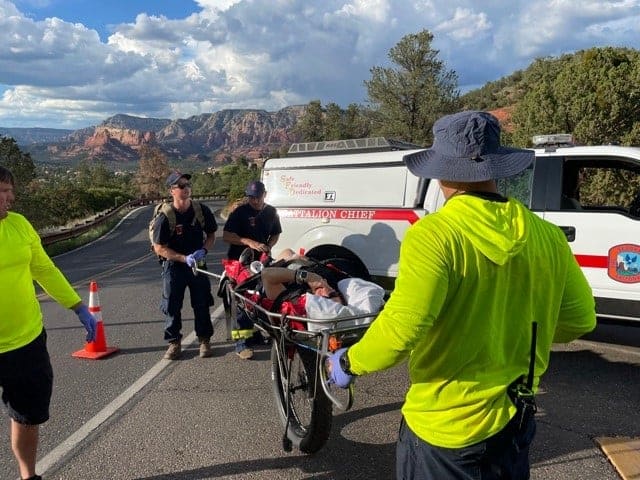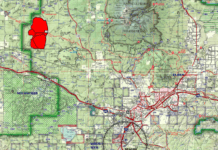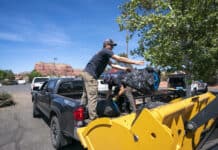
The Sedona Fire District has responded to more backcountry calls in 2021 than it has in any of the previous five years, surpassing the 2020 figure with more than three months left in 2021.
As of Sept. 24, when SFD pulled data from the National Fire Incident Reporting System for the Sedona Red Rock News, the district had received 158 calls for service coded “backcountry.”
In 2020, the next-busiest year in the past five years, the total for the entire year was 156 calls. The total number of calls received by SFD in 2020 was 4,419.
In September, the district put the first of two custom built trail rescue Utility Terrain Vehicles in service. In a post about the purchase, the district said the UTVs were needed “given the increase in calls to service requiring these machines” and the “difficult terrain we encounter.”
The “backcountry” desig-nation refers broadly to any incidents occurring on or near trails, trailheads and dirt roads, as well as true backcountry areas, like mountaintops or wilderness. In Sedona, that’s typically national forest land. The Sedona Fire District’s service area is vast and includes undeveloped areas stretching almost from I-17 and State Route 179 past Honanki Heritage Site, as well as much of Oak Creek Canyon.
The Sedona Fire District maintains skills required for many outdoor emergencies, including swiftwater rescue, high-angle rope rescue and short-haul helicopter rescue.
“Our trail rescues in the past years have gone crazy,” Fire Marshal Jon Davis said of the volume of calls. “If that trend continues for another two or three years, that’s really going to have an impact on our service.”
Davis said that backcountry calls often require more resources than calls to residential or commercial areas.
“The issue with the backcountry rescue is … a trail rescue can use a lot of vehicles for a long time,” he said. Trail rescues “tend to be longer term and involve more people. Ten or 11 people can be out for 2 or 3 hours.”
Backcountry calls to SFD Yr Winter Spr. Sum. Fall Total '17 12 27 42 29 110 '18 14 38 50 33 135 '19 10 31 78 37 156 '20 19 20 72 45 156 '21 18 63 59 18* 158 *as of Sept. 24
Davis said that the volume of calls this year has the district wondering whether the trend is going to continue or if it’s a temporary phenomenon.
Looking closer at 2021’s numbers, it’s not clear if the pandemic surge in outdoor recreation is continuing or showing signs of waning. That’s because this year had a huge concentration of calls for service in the spring, March through May, which included a spring break that swamped the town. The surge made for a spring with two to three times as many emergency calls to SFD than any of the previous four years.
The other seasons in 2021 are so far not as anomalous as the spring. This past summer recorded fewer calls than the summers of 2019 and 2020, but this season included a full forest closure for about two weeks in June and July.
Local fire officials report that heat exhaustion and dehydration are major reasons for service calls, and the three warmest years ever recorded in Arizona by average temperature were in the past five years. Last year was the second warmest year ever recorded. All of the top five warmest years have been recorded since 2014.
Last May, the U.S. Forest Service reported that visits to all U.S. national forests and grasslands increased by 18 million visits, or 12%, amid the pandemic in 2020 compared to 2019. According to USFS, dispersed recreation sites and wilderness areas saw the largest increase in 2020, at 25%.





















